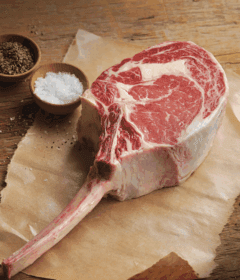Buying and Storing Eggs

Buying and Storing Eggs – When it comes to buying eggs, choosing between brown and white or large and jumbo is just the beginning. Buying and Storing Eggs – Here we clear up the confusion and give tips on how to store your eggs so that they stay their best, most delicious selves.
Did vou know that there are more hens than people in lowa?
Or that an average American eats about 279 eggs per year?
On average, a working hen lays about 300 eggs per year.
One large egg contains about 6 grams of protein.
Buying and Storing Eggs – Eggshell Color

Buying and Storing Eggs – While the most common shell colors white and brown, you can find blue or even green eggs in some cartons.
The good news. There’s no nutritional or favor difference between different colored eggs.
So pick whatever is appealing to you.
Buying and Storing Eggs – Grades

Buying and Storing Eggs – Grading indicates not only freshness but also the quality of the eggshell, with blemished or misshapen eggs given a lesser grade.
Grade AA is the nighest-quality egg you can get, but since it takes time to get eggs from farm to the store, you’ll find mostly Grade A on grocery store shelves.
Grade B eggs are often sent to food-processing facilities to be made into other egg products
Buying and Storing Eggs – Egg Naming

Farm Fresh Eggs
This term is not regulated by the U.S. Department of Agriculture (USDA), so unless you’re buying eggs from a local framer, you can ignore it.
Hormone-Free Eggs
This label is misleading. It is illegaI to give chickens hormones.
Vegetarian Fed Eggs
This means that the hens are fed only vegetarian feed. This doesn’t affect the flavor or nutritional value of the eggs, but, since chickens are natural omnivores, a vegetarian diet is actually not the best
thing for their digestive
Omega-3 Eggs
This means that the hens’ feed contains omega-3 fatty acids, which could be in the form of fish oil, flaxseeds, or dehydrated alfalfa.
Some people take omega-3 supplements to promote heart health.while they are likely caged at least you know that they are fed Omega 3 food and therefore have the right kind of fat.
Keep in mind this is not regulated so it’s hard to say how much Omega 3 is in it.
Pasteurized Eggs
Most eggs aren’t pasteurized and are just washed and sanitized per USDA regulations.
This washing removes bacteria and debris from the shell. In addition to being washed, pasteurized eggs are heated to kill bacteria such as salmonella.
This can affect the protein structure of the egg white, which can in turn affect certain recipes that require stiffly whipped egg whites, like angel food cake.
Those who are wary of using eggs in raw applications (such as in Caesar salad dressing) can use pasteurized eggs. However, they can be hard to find.
Organic Eggs
This means that the farm has been certified as organic by the USDA.
Organic eggs have regulated standards that they must come from chickens that are uncaged and have some access to the outdoors, although this can be limited and might not be pasture.
They are fed an organic vegetarian diet free of animal by-products, pesticides and genetically modified food.
The USDA requirements include feeding hens organic, non genetically modified food; giving antibiotics only as needed; providing the hens with access to the outdoors; and using farming methods that promote ecological balance and conserve biodiversity.
Certified Humane Eggs
In order for eggs to be certified as humane, a nongovernmental third-party auditor checks
to make sure that the hens are being treated humanely.
Some requirements include providing access to perches and nest boxes, limiting flock density, and forbidding certain practices such as debeaking.
Farmers are not required to provide outdoor access for the birds, but if they want a Certified Humane Pasture-Raised or Free-Range designation, they must meet further requirements set by the third-party auditor.
Cage-Free Eggs
This doesn’t necessarily mean that the hens are roaming across the countryside picking at bugs and flowers.
Cage free this means the birds are not caged but does not mean that they have access to outside.
They are often in barns or warehouses.
Free-Range Eggs
TheUSDA stipulates that free-range hens must have “continuous access to the outdoors during their production cycle.
This means the hens are uncaged and have some access to the outdoors from the barn or warehouse, but since this is not regulated, there is no way of knowing how long those hens actually do spend outside or what the outside is like (it could be a concrete slab).
Pasture Raised Eggs
There is no regulation of this term, which implies that hens get at least part of their food from foraging on pastures for greens and bugs.
The best way to know if it truly is allowed to forage on pasture is to look at the color of the yolk
Unspecified Eggs
Generic, non-name-brand cartons of eggs are most likely from an industrial egg farm. While some large farms have cage-free facilities, it is almost impossible to know if the unspecified eggs you’re buying are from cage-free facilities.
Buying and Storing Eggs – Refrigeration
Buying and Storing Eggs – It all depends on if the eggs were washed.
Standard supermarket eggs must be refrigerated because they are washed to clean off dirt and debris, a process that strips them from their protective cuticle and leaves them more vulnerable to bacteria; refrigeration prevents bacterial growth.
Home-raised eggs, if they been washed by their collector, still have this protective cuticle and don’t need to be refrigerated.
However, it is recommended that before using these eggs you give them a quick rinse and scrub to clean the shells of debris.
The Shelf Life of an Egg
Buying and Storing Eggs – The USDA recommends using refrigerated eggs no longer than three to five weeks after buying them.
A test was made of old eggs (1, 2 3 and 4 months old) and all were found to be palatable, though the four-month-old eggs had very loose egg whites and a slight refrigerator taste.
The older eggs also deflated rapidly when whipped.
While old eggs can be common, rotten eggs are rare.
Eggs can become rotten, but its really only when theres been some sort of bacterial invasion, so it’s not a time-sensitive thing.
Are Cracked Eggs OK to Use
Buying and Storing Eggs – Play it safe when it comes to using a cracked egg.
In general, don’t use any cracked eggs.
A crack in the shell is an opening for any bacteria to get in there.
When in doubt. toss it out
Are Egg Cartons Important

Buying and Storing Eggs – Eggshells are porous and can absorb odors, which is why they should be stored in a container.
Minimize air exchange to keep eggs as fresh as possible.
As far as where to store eggs, keep them away from the refrigerator door, which exposes them to gusts of warmth when it’s opened.
Instead, store eggs on your refrigerator shelves where they are kept at a more consistent, cool temperature.
Egg Size

Buying and Storing Eggs – The USDA determines egg size by the weight of a dozen eggs. Common egg sizes include medium, large, extra-large, and jumbo.
Peewee is the smallest size, but you would rarely, if ever, see peewee eggs in the grocery store.
We use large eggs, which is a standard size and what we recommend for the best results when using our recipes, particularly when baking.
But if you re just making yourself a fried egg, the size of the egg doesn’t matter as much.
Egg Weights
Buying and Storing Eggs – If you bought jumbo eggs and a recipe calls for large, don’t worry.
Here’s a formula to make your eggs work.
Take the total weight of the eggs called for in the recipe and divide that number by the weight of the egg you have to get an approximate number of how many eggs to use.
The Real Story on Egg Yolks
Eat the Rainbow: Does a Colorful Yolk Mean a Better Egg
Buying and Storing Eggs – What a hen eats can have a colorful impact.
A nearly white egg yolk can be the result of an all-white cornmeal diet, whereas a rich-orange yolk could be from a diet of marigolds, dehydrated alfalfa, kitchen scraps, old fashioned foraging.
Although an orange yolk might look mighty fine. It’s nutritionally the same as a paler one.
Additionally, it is really only when hens eat foods containing lipids or fats that you might get a taste of what they ate in their eggs as lipids or fats get deposited in the yolks.
Though colorful their eggs will just taste like eggs.
While some argue that a chicken with a diverse diet lays more flavorful eggs, that’s up for interpretation.
The results of a blind study in a variety of states that included the most expensive and the least expensive supermarket eggs, as well as a carton of local eggs, tasters didn’t notice much of a difference.
Bottom line: Yolk color doesn’t mean better flavor or nutrition.
The best eggs tend to be local – farm to table.
Wine Folly: The Essential Guide to Wine >>



